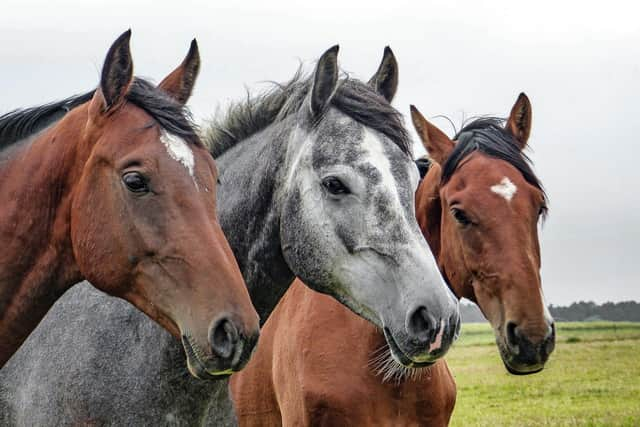FARMING: Wounds to horses can be slow to heal


It is commonly said that wound healing on horses is slow, but do you know why? It has been shown that ponies have a quicker healing process than horses (and usually they are smarter and do not get injured as often as horses).
In the same way, different parts of the horse have different healing abilities, the body and the head of a horse heal far quicker and usually with less complications than the lower limbs. When dealing with a wound, no matter what its location, we always attempt to close it with sutures. This helps to greatly reduce the healing time; however, this is not always possible, and it is common for these sutures to break down.
Advertisement
Hide AdAdvertisement
Hide AdThe first and very important stage of the healing process is the inflammatory response, which is quite poor in the horse.
This is the main reason why often a vet will not prescribe anti- inflammatory drugs to your horse unless they are absolutely needed. Avoiding the use of excessive anti-inflammatory drugs such as phenylbutazone (commonly referred to as bute) we not only avoid delaying the healing process, but we also avoid masking pain, which can be important to detect complications at the earliest opportunity. Diagnostic imaging is also an important part of assessing a wound in order to rule out fractures or detect possible foreign bodies within the wound. Other common limiting factors of the wound healing process include movement and infection.
Movement restriction is more important and significant on wounds of the lower limb due to the large number of joints, and this is why we tend to apply bandages. And if you know a horse who had a wound on its limbs, you probably know already that sometimes a very very big bandage is needed in order to reduce the movement as much as possible. Often splints or casts are used in addition to bandages to limit movement further. To avoid infection, we aim to keep the wound as clean as possible or use topical treatments or antibiotics ahead of using systemic antibiotics.
Local treatments tend to be more effective than systemic antibiotics and we can achieve higher concentration of the antibiotic in the area of interest.
Advertisement
Hide AdAdvertisement
Hide AdOther targeted treatments include thorough lavage of the wound, topical creams, silver impregnated dressings, or manuka honey (which is great for wound healing at the initial stages). One way of ensuring a high concentration of antibiotics reaches an infected wound is to apply a tourniquet to the horses’ limb and directly inject antibiotics below the tourniquet, ensuring the antibiotics are carried by the blood to the wound where it will remain for around 15-20 minutes, although this method is reserved for the most infected wounds or those which are not responding well.